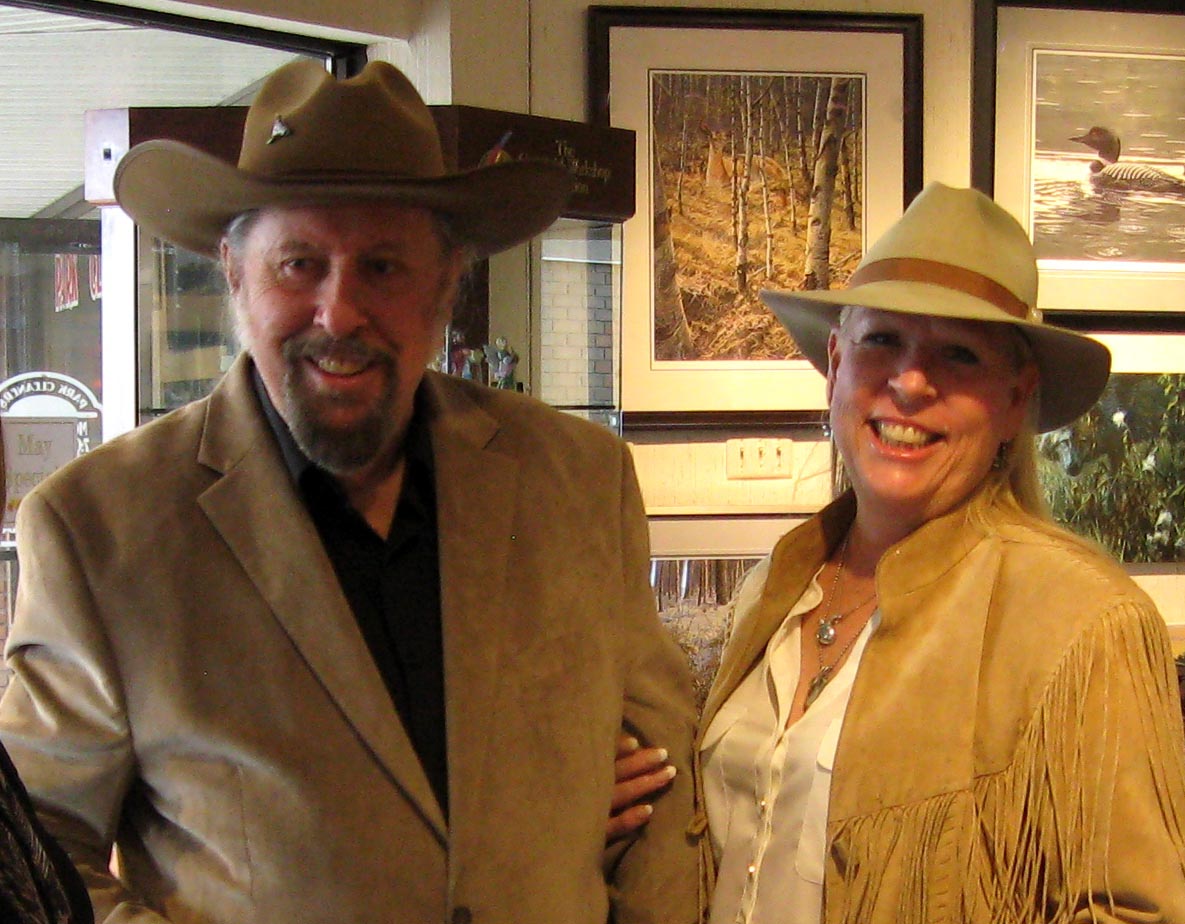Update: Sadly, John lost his battle with cancer on May 19, 2020 and passed away peacefully with his wife Suzie at his side. This interview was originally published in 2017.
John and Suzie Seerey-Lester have won awards for their art and have been featured in some of the most prestigious museums and collections in the world, including on the walls of the White House. Recently, the world renowned wildlife artists were in the Picture This! Framing and Gallery to host a workshop for professional artists. We were able to chat with the artists and find out about their conservation work, their world travels, tips for aspiring artists, and what it’s like to be married to a fellow artist.
How did you two meet?
John: That was a while ago. I took 30 students down to Guatemala. I found this wonderful tree and somebody took me up at 4 in the morning in the dark and then you go to the top of the platform and you look out and see the canopy come alive with the temple on the mountain through the mist and the toucans fly by. I wanted to share it with the students. I could only take 4 per day. Suzie was in the first group.
Suzie: It was magical to see that scene. We kept running into each other later at shows and I started stalking him. (Laughs)
John: Like all prey I didn’t know I was being stalked until it was too late. (Laughs)
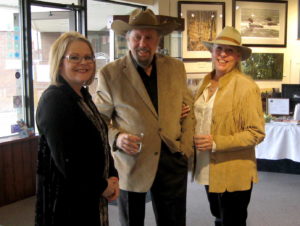
Gallery co-owner Carol LaMarche (left) with artists John & Suzie Seerey-Lester
Being married and being artists together. How has that impacted your art?
John: Artists normally are solitary workers. They work alone in a studio on their own. They don’t really have anyone to talk to. So they are very insular. When you work with a spouse who is also an artist, then you’re working together. You’re bouncing ideas off each other all the time. It’s a partnership in challenging a subject or solving a problem. A lot of artists have blocks where they can’t paint. When you’re working with an artist you can work your way through that block a lot easier because the other person knows what you’re going through and can possibly resolve it with encouragement or whatever.
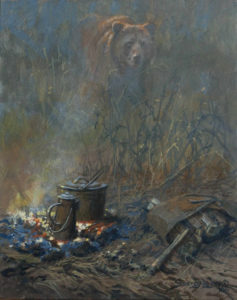
Bruin Supper by John Seerey-Lester
Suzie: We’re a second set of eyes. I can see things he doesn’t see because you can’t see the trees for the forest. He can see things that I miss or haven’t finished. I think that is so helpful when we talk about colour and we talk about composition. As we’re driving down the highway we’re saying how would you do that or what colour would you add to get that green. I think that’s something most artists don’t have and we’re so lucky to share that and bounce those ideas off each other. We found that we can’t even paint if we’re both not in the studio.
John: She said second pair of eyes which is really good. Sometimes as an artist, you’re working and you’re not sure if you’re heading in the right direction. You wonder if it’s really good. With someone else there to say it then you get that feedback.
You guys have travelled all over the world. What does coming to Edmonton mean for you?
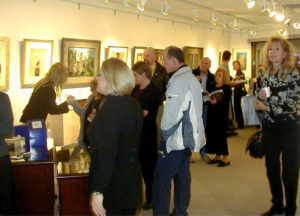
John: To me it’s like coming home. I used to come here twice a year for about 15 years. The Picture This! Gallery started in 1981 and I was the first show. I’ve never really been here at this time of year. I once came here when it was 40 below. My beard froze. I saw the sun dogs for the first time. It was a memorable event.
You’ve been to all corners of the globe to paint. Is it important to go to all these places?
John: Seeing it first hand is very important. If you don’t see firsthand and you’re painting wildlife and you’re only going to zoos or stuff like that you’re not seeing them at their best. Even if they’re healthy they are still a zoo animal. When you see them in the wild and see how they hunt and see how they operate then you’re learning. When you come to do that painting it’ll be more authentic down to that blade of grass. That side of things is very important.
How tough is it to schedule and find the time to travel to these places?
John: That’s the hard part. I’ve been doing books the past 15 years and they take a lot of work. Then we do some major shows so you have to supply sufficient work for that.
Suzie: We plan years in advance. We have a big schedule. We have to be careful because we run out of time. We’re now learning to say no to more things. We were asked to go to China and we turned it down. We were asked to go to London and said no so that we could stay home and get paintings done.
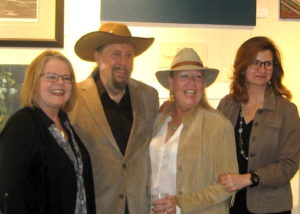 What is it that keeps you guys going after all these years?
What is it that keeps you guys going after all these years?
John: Excitement. I get out of bed and I’m going to write that day or I’m going to paint and I’m excited.
Suzie: For me, to see these animals in the wild is just incredible. That’s what I love. To be able to see things that most people in the world may not have that opportunity. So with our paintings we’re giving them that little window into the world that they may not be able to see.
You do a lot of conservation work. Why is that important?
Suzie: To give back to the animals that help us do what we do.
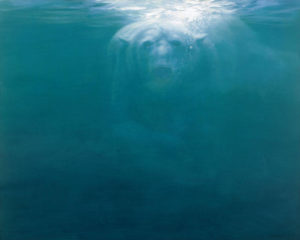
Ice Fishing by John Seerey-Lester
Do you feel that it helps your art to be involved and talking to people dealing with the wildlife?
John: To some degree but it makes people more aware. It’s like the TV shows about wildlife when they talk about a particular species. People may not be aware of that species. It’s the same with a painting. When you do a painting they are bringing that into their home. If you’ve got a message, I and Suzie, think about a painting telling a story. That story should be either the protection of that animal or bird.
What are you working on right now?
John: I’m painting more people now. The thing is I’m interested in history. When I lived in England, I use to paint the streets of England. I use to paint the Victorian and Edwardian street scenes, cobble streets and gas lamps, the misty rainy. I then went to painting wildlife and now I’m bringing the two things together. And Suzie has an interest in the old barns.
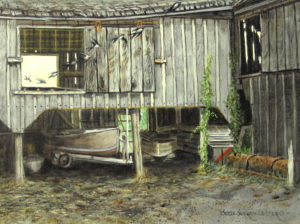
Past Times by Suzie Seerey-Lester
Suzie: They are our vanishing treasures. One day they aren’t going to be around. I love them when you can see through them and birds are flying in and out of them. I love the light in the barns. I do a lot of paintings where I’m inside the barn looking out at the light. And I love painting birds.
I found my niche painting the birds and the barns. I love to paint owls and we have the opportunity to see them where we live. There are so many beautiful birds, especially in Florida, that they are easy to paint and they are fun to paint. Because we travel all over we photograph barns wherever we go.
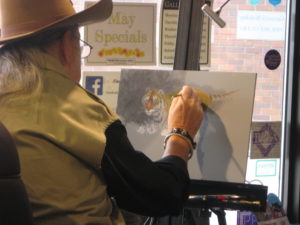
Artist John Seerey-Lester demonstrates during an artist workshop
For new artists coming up is that some advice you would give is to find your niche?
John: I’m not so sure you should try to find it. It will find you. You have to find something that you’re excited about and you don’t know what it is until you do it. But if you go out looking for it you’re not going to find it.
Suzie: Paint what you love. Because then you’re excited about it. Do your best work. Don’t let it go out of your studio unless you’re proud of it. Paint what thrills you.
John: That’s the key. Then try and present it in a different way. If you can put your own stamp on it and do it in a certain way then that’s the key. It could be lighting or something else, but something to take it to the next level.
Interested in their artwork? View originals and limited edition prints by John Seerey-Lester, and originals and limited edition prints by Suzie Seerey-Lester.

